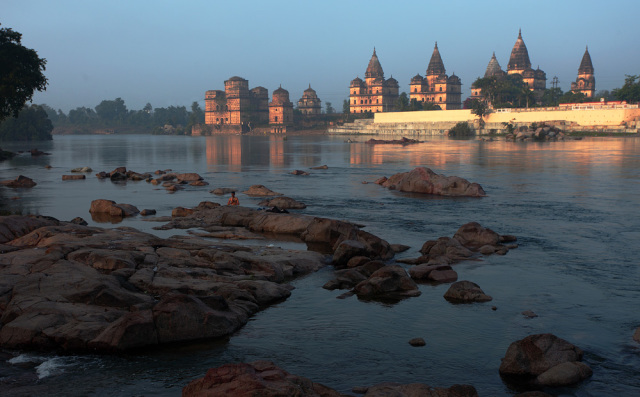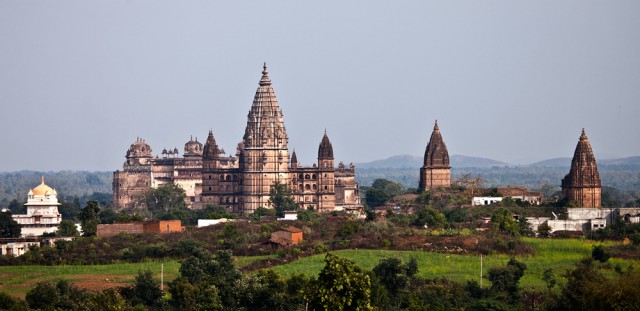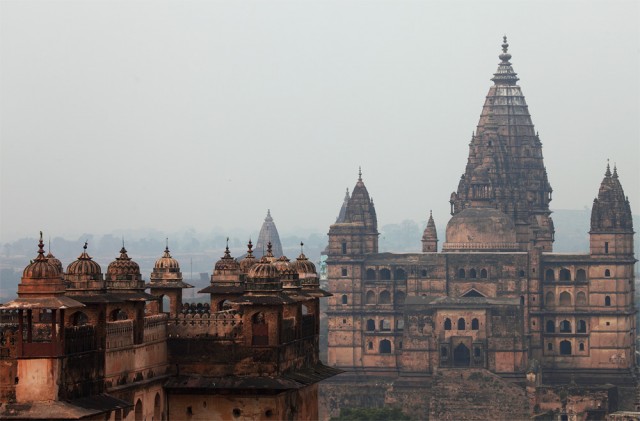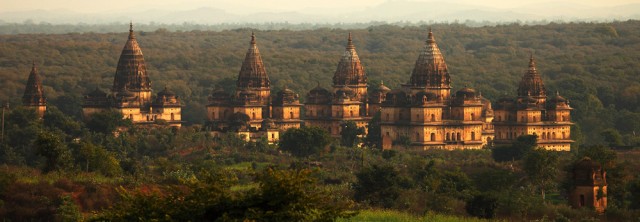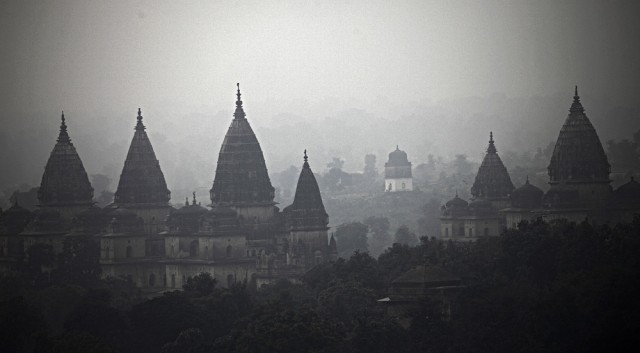Ancientness of Orchha
This article was originally published in payaniga.com
I get a puzzled look from most people – especially those who are not regularly on the road – when I talk about Orchha. “Where is this place? How do you spell it? Tell me again, what is it called?”. The questions go on. It is the first time they would have heard this name. The obscure sounding pronunciation adds to the complexities. But in most occasions, they are interested in the place because they saw some pictures that I showed them.
My introduction to Orchha happened just that way. It was not a place I had heard about in text books, glossy tourist brochures or magazine covers. But if you are trolling the web long enough looking for places to go to, and to see where others are going, it won’t be long before you stumble upon Orchha. I would have missed the name like everyone does, except that some pictures from the place made me pause and take a second look. It appeared so attractive, it remained on the back of my head since the day I first saw the photographs.
A visit had to ensue, though it took a few years to materialize. A year ago, when I decided to crisscross the beautiful places in Central India, Orchha was the first and obvious choice. The place lived up to my expectation at the very first glimpse.
It was a quaint little town in the middle of the forest – one of the places where life goes at its own pace without worrying about what is happening in rest of the world. There isn’t much else but forest in every direction of the town, with a few villages dotting the road to nearby Jhansi. An old fort is the dominating landmark in the town. Two temples – one dilapidated and one renovated, a group of cenotaphs in memory of kings of yesteryears, a few houses and an equal number of guest houses, a big chowk where most of the town folks hang our is all that the place is.
It is this small size of the town that allows all the ancient structures – the palaces in the fort, the very tall Chaturbhuj Temple and the cenotaphs of the kings to dominate the landscapes. Climb up on one of these buildings and you see the other structures standing so high that they make everything else in the vicinity look like miniature models. The views suddenly give the idea of being in a lost country ruled by kings living in a magical, opulent world – the kind of place we would see in a Hollywood setup.
I was so charmed by Orchha that I let the days pass by without leaving the place, giving more of my days to Orchha and less to many other places I wanted to visit in Madhya Pradesh. As I went on my daily stroll to the fort, I frequently encountered questions like “You are still here? (there was no offence in their questions!) Are you doing some research on Orchha? Are you working with some publication?”. It took about two days for people to get used to seeing me as much as I got used to these question. My initial plan of spending two days in Orchha had dragged on for five.
The fort complex with its palaces is nearly four hundred years old. Despite its place in the history as the capital of Bundela Kings who played a major role in the region’s past, it doesn’t really figure as prominently in history books as nearby Jhansi and Gwalior Towns. Raj Mandir, the royal palace, is a beautiful structure built from mortar with an open quadrangle in its center and beautiful galleries and living quarters around it. Its top floor is built with an array of Chhatris (shelters with umbrella-like roof) that perhaps allowed the royal women a bird’s eye view into the town.
The best sights from the Chhatris are the group of cenotaphs at the opposite end of the town, and the tall Chhaturbhuj Temple right in front. Chhaturbhuj Temple is the largest and the grandest of the building in Orchha standing at a height equivalent to a ten-storied building. Adjacent to it is the Ram-Raj Temple, as old as the other structures, but has seen constant renovation and fresh paint supported by continuous flow of devotees.
It is the cenotaphs that attracted me the most in Orchha. They are simple structures with tall gopuras which may not appear very charming from up-close. But seen from a distance, the bunch of looming towers appear as if they belong to a lost world. They have a mood of their own that changes with the weather – appearing sturdy and fortress-like on a clear day, charming and romantic on a foggy morning.
The location of cenotaphs is as charming as the cenotaphs themselves. Betwa River, with its clear waters, flows gently next to these edifices. An old culvert offers a good view of the towers from riverside. A reserve forest stretches far away on the other side of the river, offering a sense of isolation to the cenotaphs as well as rest of the town.
The river, forests and the lost world symbolized by the ancient remains held me to Orchha strongly for many days.
Also see: walking tour of Orchha.
View Walks in India – Orchha in a larger map
Where is Orchha? How to get to Orccha? What are the attractions?
Orchha is in northern parts of Madhya Pradesh, bordering MP and UP. It is 15km from Jhansi, about 500km south of Delhi. Jhansi is located along the main railway line from Delhi to Bhopal, so it is relatively easy to get their despite its distance from major cities.
It is a small town littered with beautiful ancient monument, located next to a clear, perennially flowing Betwa River and surrounded by forests in all directions.
